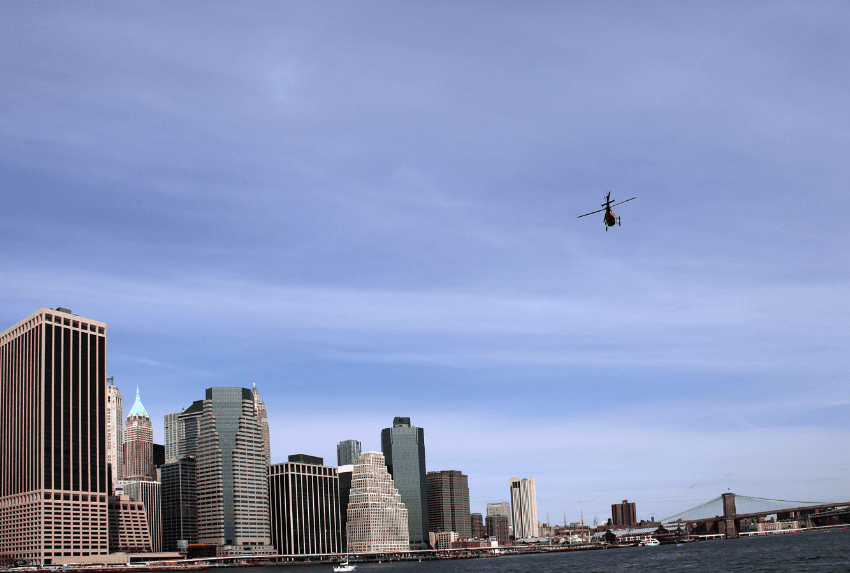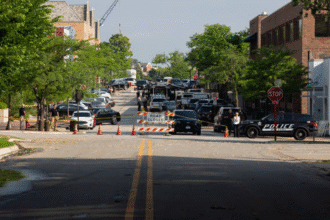Six people—including three children—were killed in a horrific New York helicopter crash in the Hudson River during what should have been a picturesque sightseeing trip. Rising from the Downtown Skyport in Manhattan, the Bell 206 helicopter flown by New York Helicopters set off. The happy experience became tragic twenty minutes later as the helicopter sank into the river without a survivor.
There were five Spanish family members among the passengers, together with their American pilot. The crash has startled not just New Yorkers but also the international travel and aviation communities. Reactions from all around the world flooded in as the news leaked, and quick investigations were started to find out what went wrong.
What went wrong aboard the flight?
Officials claim that the New York helicopter disaster happened soon after the aircraft made a standard turn close to the George Washington Bridge to follow the New Jersey shoreline—a popular path for sightseeing trips. The chopper lost control and started fast plummeting for reasons still under research.
Before splashing into the Hudson River, the chopper flips upside down, as seen on eyewitness video. Viewers described the scene as horrible and weird. “At first, I thought it was just trash or maybe birds, but then the sound hit—it was like thunder,” a local remarked. “Emergency vehicles started flooding the area while the sky had small black particles falling.”
While some called emergency services, others hurried nearer the riverbank to get a closer view. The crash site turned into a disorganised chaos of flashing lights, rescue boats, and divers looking for any trace of survivors in minutes.
What was the response of Emergency Services?
Emergency response personnel from New York moved fast. The first distress contact arrived within a few minutes following the collision. Immediately at the site were rescue boats, helicopters, and divers. New York Fire Commissioner Robert Tucker claimed that swimmers entered the sea practically immediately following the alert’s reception.
Four persons were declared deceased at the spot, notwithstanding the quick reaction. The other two were discovered unresponsive and were declared dead at a local hospital. “Everything humanly feasible was done by our teams. From dispatch to recovery, Commissioner Tucker remarked, it was instantaneous action.
Shortly after, Mayor Eric Adams spoke to the media, saying, “Our hearts go out to the families. This is a terrible loss, and we are dedicated to finding the reason behind it.
Whose investigation is the New York Helicopter Crash under?
Leading the investigation on the New York helicopter crash are the Federal Aviation Administration (FAA) and the National Transportation Safety Board (NTSB). Among their duties are damage assessment, flight data evaluation, analysis of air traffic control communications, and maintenance record review.
The CEO of New York Helicopter Charter Inc., Michael Roth, spoke of his pain. I am granddad and a father. Since the news came in, my wife has not stopped crying. Inquiring about the mechanical condition of the helicopter, Roth said, “That’s under the care of our Director of Maintenance.”
As possible causes of the disaster, investigators also take into account pilot training, time of year, and air traffic control contact.
How safe are New York’s helicopter tours?
The New York helicopter crash has sparked public discussions about urban helicopter tour safety and regulation once more. For their broad views of sites including the Statue of Liberty, Empire State Building, and Central Park, these trips are quite popular among visitors. But because of packed airspace and few emergency landing zones, they also carry hazards.
This occurrence is not one-sided. Five people perished in an East River helicopter crash identical in kind in 2018. The sole survivor, the pilot, had to unbuckle and swim to safety. Nine persons were killed when another helicopter ran afoul of a private jet over the Hudson River in 2009.
These historical mishaps along with the most recent New York helicopter catastrophe highlight the need of more thorough control and maybe new laws to lower passenger and crew danger.
Why is the Crash Site of Such Significance?
Near Manhattan’s west side, a highly busy area noted for its trendy stores, luxury high-rises, and close proximity to New York University’s main campus, the crash occurred. Not only are residents drawn to this area, but thousands of visitors come daily.
Because of its location along the Hudson River, helicopter tour companies especially like it. But convenience also carries more risk. Little space for error exists in busy airways, fast-changing weather conditions, and urban structural density.
If urban sightseeing flights are to keep going, experts advise more thorough training courses and tougher safety rules to be followed. Many are advocating a review of how and where these tours run in New York City and other cities.
What Do Leaders and Authorities Say?
City and federal authorities are advising calm while inquiries are under way. Still, the demand for responses is becoming more forceful. Speaking throughout the country, President Trump also said the New York helicopter tragedy was “terrible” and offered sympathies to the impacted families.
Groups advocating for transportation are requesting quick evaluations of helicopter activities over highly populated areas. Families of past crash victims have also participated in the dialogue advocating change.
Public confidence in sightseeing flights could weaken unless the aftermath of this catastrophe shows clear change, openness, and responsibility.
What then happens?
Consulates and local officials are contacting and helping the families of the victims as the NTSB and FAA keep compiling data. Once the inquiry ends, it could lead to revised flight paths, new safety rules, or perhaps temporary suspension of specific tour operations.
New Yorkers and visitors both are left in grief for now. The sad reminder of the need for aviation safety—especially in highly populated areas—was provided by the New York helicopter crash.y learning from this event and making sure it never occurs once more is the aim ahead.
Notes of Final Thought
The city and its citizens have suffered greatly from the New York helicopter accident. Transparency, safety, and action must always take front stage even with lives lost and unresolved questions. Let this act as a wake-up call to give life priority over leisure in the realm of travel and air transportation as investigations develop.








